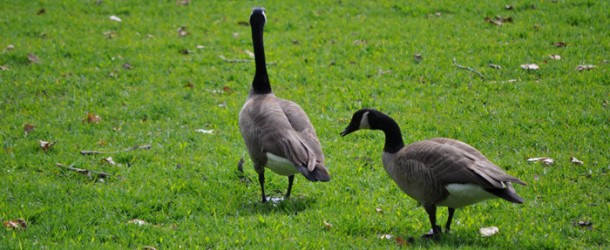Ever wonder how the down feathers used in down-filled comforters, jackets, and vests got from the birds to your back? Undercover video footage obtained by PETA reveals that goose down production is anything but warm and fuzzy.
The video footage shows workers grabbing and carrying geese by their delicate necks or by a single wing. The frightened birds are squeezed while held upside down between workers’ knees as the workers rip out fistfuls of feathers. One worker was photographed sitting on a goose’s neck in order to prevent the birdfrom escaping.
Once their feathers have been ripped out—exposing raw skin—many birds lie on the floor, bleeding and shaking. Birds are frequently plucked so violently that they are left with gaping wounds. When this happens, workers use a needle and thread to sew up the wound—without any painkillers.
Buying down also supports the cruel foie gras industry, which force-feeds ducks and geese until their livers expand up to 10 times their normal size. Outdoors outfitter The North Face admitted in 2012 that it was using down from foie gras farms, despite previous claims that none of its down came from geese who were force-fed or live-plucked.
In contrast, after learning from PETA how down is obtained, The Coleman Company, Inc. recently became the first outdoors outfitter to switch to selling only down-free sleeping bags, jackets, and other products.
Coleman’s ethical decision shouldn’t hurt the company’s bottom line, according to a poll that PETA recently commissioned of outdoor sports enthusiasts, which revealed that the vast majority of consumers—80 percent—are happy to choose products with synthetic insulation over duck or goose down and would shop at stores that don’t sell down products. That number rose to 88 percent after respondents were informed that down is sometimes obtained from birds who are force-fed for foie gras.
Concerned consumers can look for outerwear and bedding insulated with “down alternative” polyester fill, PrimaLoft®, Thinsulate™, and other vegan materials that are lightweight, packable, machine-washable, and, unlike down, retain their insulating properties even when wet. Last year, one totally synthetic jacket—Outdoor Research’s Halogen jacket—earned Outside magazine’s prestigious Gear of the Year Award. The North Face’s new Thermoball technology—which is constructed with low-weight, individual high-loft clusters that mimic down—reputedly offers the best warmth-to-weight ratio of any synthetic on the market, which is all the more reason for the company to get out of the down business.
Photography from rml-stock.
